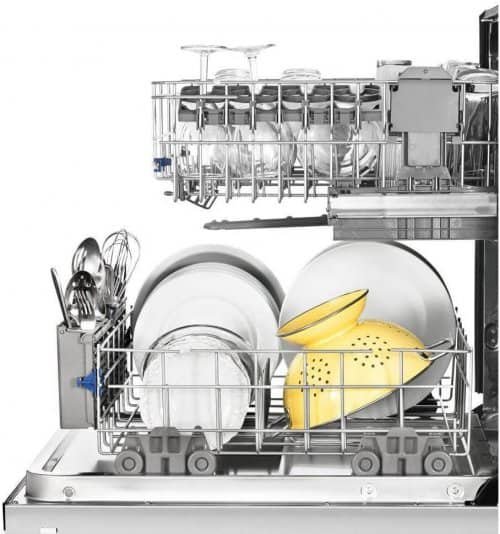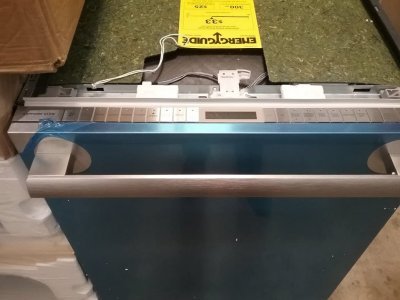A clogged dishwasher can be a frustrating situation, especially when it’s filled with standing water. Not only does it hinder the dishwasher’s performance, but it also prevents you from efficiently cleaning your dishes. However, with the right knowledge and a few simple steps, you can unclog your dishwasher and get it back in working order. In this article, we will guide you through the process of unclogging a dishwasher with standing water, ensuring you can tackle this issue effectively.
Table of Contents
Understanding the causes of a clogged dishwasher
Before diving into the unclogging process, it’s essential to understand the common causes of a clogged dishwasher. This knowledge will help you address the root of the problem and prevent future occurrences. Some common causes include:
- Food debris: Food particles and residue from dirty dishes can accumulate in the dishwasher’s drain, causing a clog over time.
- Grease and oil: Grease and oil can solidify and create blockages in the dishwasher’s drain hose and other components.
- Soap scum: The use of excessive detergent or low-quality dishwasher soap can result in the accumulation of soap scum, leading to clogs.
- Mineral deposits: Hard water can leave mineral deposits on the dishwasher’s internal components, obstructing proper drainage.
Safety precautions before unclogging the dishwasher
Before starting the unclogging process, it’s crucial to prioritize safety. Here are a few safety precautions to keep in mind:
- Turn off the power: Ensure the dishwasher is completely turned off and unplugged before attempting any repairs or unclogging.
- Wear protective gloves: Protect your hands by wearing rubber gloves to avoid contact with dirty water and potential sharp objects.
- Use eye protection: Wear safety goggles to shield your eyes from any debris or cleaning agents that may splash during the process.
- Gather necessary tools: Prepare the tools required for the unclogging process, such as a screwdriver, pliers, and a bucket for water disposal.
Step-by-step guide to unclog a dishwasher with standing water
Now let’s dive into the step-by-step process of unclogging a dishwasher with standing water:
Turn off the dishwasher
Begin by turning off the dishwasher and unplugging it from the power source. This step ensures your safety and prevents any accidental water flow during the unclogging process.
Remove the standing water
Using a bucket or a cup, carefully remove the standing water from the dishwasher. Be cautious to avoid splashing the water around.
Check the dishwasher drain hose
Inspect the dishwasher drain hose for any blockages. Disconnect the hose from the dishwasher and the sink drain to examine it thoroughly. If you notice any debris or clogs, use a long, flexible brush or a plumbing snake to dislodge them.
Inspect the dishwasher filter
Remove the dishwasher filter located at the bottom of the dishwasher. Rinse it under warm water to remove any accumulated food particles or debris. Cleaning the filter regularly can prevent clogs and improve the dishwasher’s overall performance.
Clear debris from the spray arms
Check the dishwasher’s spray arms for any blockages. Remove them carefully and rinse them under running water. Use a toothpick or a small brush to dislodge any food particles or mineral deposits that may be obstructing the spray arm nozzles.
Clean the dishwasher drain
With the drain hose and spray arms clear of debris, it’s time to clean the dishwasher drain. Mix equal parts of vinegar and hot water in a bowl and pour it into the dishwasher’s drain. Let it sit for about 15 minutes to break down any grease or soap scum. Then, flush the drain with hot water to remove the loosened debris.
Run a test cycle
After completing the above steps, reconnect the dishwasher drain hose and spray arms. Plug in the dishwasher and run a test cycle without any dishes inside. This cycle will help flush out any remaining debris and ensure proper drainage.

Prevention tips to avoid future clogs
To prevent future clogs in your dishwasher, consider implementing the following tips:
- Scrape dishes before loading: Remove excess food particles from dishes before placing them in the dishwasher to minimize the accumulation of debris.
- Rinse dishes lightly: Rinse dishes lightly with water to remove any loose particles before loading them into the dishwasher.
- Clean the filter regularly: Make it a habit to clean the dishwasher filter at least once a month to prevent buildup and maintain optimal performance.
- Use high-quality detergent: Choose a dishwasher detergent that is specifically designed for your dishwasher and effectively removes grease and food residues.
- Run hot water before starting the dishwasher: To ensure proper cleaning and efficient drainage, run hot water in the sink before starting the dishwasher.
Why there is water in bottom of dishwasher when not in use?
The water in the bottom of your dishwasher is likely due to a clogged drain hose or a malfunctioning drain valve. If the drain hose is blocked, the water will back up into the dishwasher and pool at the bottom. This could be caused by food debris or other objects blocking the hose. A faulty drain valve can also cause water to collect in the bottom of your dishwasher. This occurs when the valve does not close properly, allowing water to flow back into the dishwasher instead of draining out. In either case, you should contact a professional appliance repair technician to diagnose and fix the issue.
Can I use bleach to unclog my dishwasher?
No, it’s not recommended to use bleach for unclogging a dishwasher. Bleach can damage the dishwasher’s internal components and potentially harm the environment. Stick to using vinegar, hot water, and mild cleaning agents for unclogging purposes.
Why is there still water at the bottom of my dishwasher after unclogging?
If there is still water at the bottom of your dishwasher after unclogging, it could indicate a more severe issue. It’s best to contact a professional technician to diagnose and repair the problem.
How often should I clean the dishwasher filter?
It’s recommended to clean the dishwasher filter at least once a month. Regular cleaning helps prevent clogs and ensures optimal performance.
Can I use a plunger to unclog my dishwasher?
No, using a plunger is not suitable for unclogging a dishwasher. Plungers are designed for clearing clogs in toilets or sinks and can potentially damage the dishwasher’s delicate components.
Why does my dishwasher get clogged frequently?
Frequent dishwasher clogs can be caused by factors such as inadequate pre-rinsing of dishes, excessive use of detergent, or issues with the dishwasher’s drain hose or filter. Implementing proper cleaning practices and regular maintenance can help minimize the occurrence of clogs.
Conclusion
Dealing with a clogged dishwasher filled with standing water can be a frustrating experience. However, by following the step-by-step guide provided in this article, you can effectively unclog your dishwasher and restore its functionality. Remember to prioritize safety, inspect the dishwasher’s components, and take preventive measures to avoid future clogs. By maintaining a clean and well-functioning dishwasher, you can enjoy spotless dishes with every wash.

